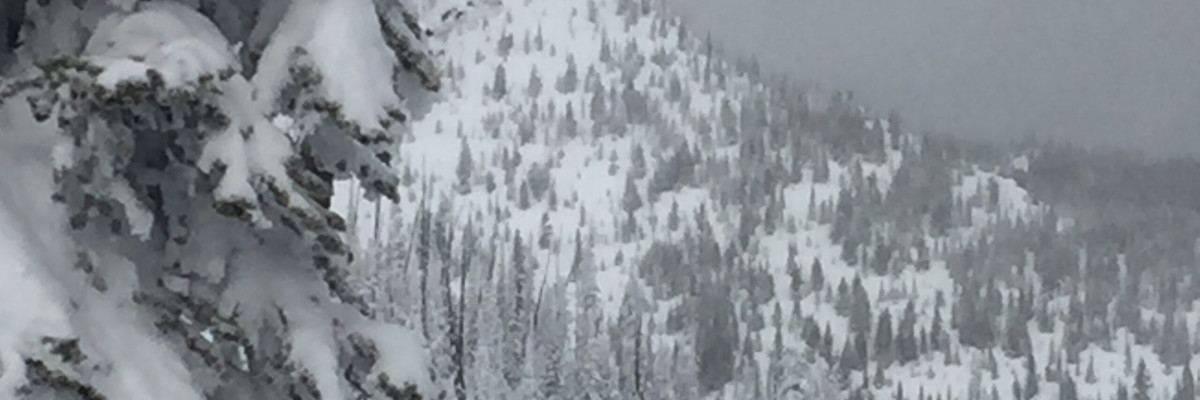The current avalanche danger is MODERATE for the West Central Montana Backcountry. Human triggered avalanches are possible on specific terrain and conditions have been in a constant state of change for the last few days. Carefully and continuously evaluate terrain and snowpack to identify areas of increased concern. The southern Missions and Southern Swan ranges have the potential to move to CONSIDERABLE later today as snow accumulates, but there is significant uncertainty in predicted snowfall.
Good morning, this is Logan King with the West Central Montana Avalanche Center’s avalanche advisory for Saturday, February 16th, 2019. Today’s advisory is sponsored by Yurtski. This danger rating does not apply to operating ski areas, expires at midnight tonight and is the sole responsibility of the U.S. Forest Service.
Weather and Snowpack
As of 5 am, this morning mountain temperatures range from 15 to 25 degrees Fahrenheit. Winds are out of the SW at 13 mph and gusting to 18 mph in the northern part of the region while winds in the southern Bitterroot are 3 mph with gusts to 9 mph from the SE. 24-hour snow totals range from 1-6 inches, and snotels have picked up an additional 0.1-0.5 inches of SWE.
Today, the new snow is a primary avalanche concern. The new snow can be problematic for a multitude of reasons. The first problem is storm slabs. The new snow is bonding well to the old snow surface at most locations and is gaining strength but needs another day or two to fully settle and bond. Secondly, the new snow sluffs easily and creates loose snow avalanches that can be dangerous if terrain traps are present. If the sun comes out and temperatures are mild be aware that small loose wet avalanches may develop later in the day.
Wind slabs are the second avalanche problem today. Winds have shifted back and forth and come and gone periodically over the last few days. Wind loading can be found on any aspect, but due to the variable nature of the winds, most wind slabs are relatively small and soft slabs. Look for signs of wind loading like rounded pillows of snow and cornices to identify what slopes have been loaded. More significant loading can be found at upper elevations and will have the potential for larger slabs.
Persistent slabs are still possible in isolated areas and are most prevalent in the southern portion of the advisory area. Facets and buried surface hoar can still be found in the southern Bitterroot. The persistent weak layers are continuing to gain strength slowly. Take a few minutes to dig a pit and perform stability tests to identify if persistent weak layers are present and reactive.
Big Picture: Given our recent weather, loading events and persistent weak layers lingering at some locations, there is plenty of reason to be suspicious of the snowpack. The snow is settling and bonding well but don’t forget to listen to your gut, if you have a feeling there is something you are missing you probably are. The snowpack requires attentive evaluation to gather all the pieces and clues in order to make an informed decision.
Avalanche and Weather Outlook
Today will bring scattered snowfall with accumulations of 1-3 inches at most locations. The caveats are the southern Missions and Swan ranges where more snow is possible today. However, there is a fair bit of uncertainty as to timing and total snowfall for the northern part of the forecast area. Stay aware of changing conditions and continually re-evaluate avalanche hazard throughout the day. A cold front is expected to move into the area tonight and bring increased wind and cold conditions again for Sunday. Avalanche hazard today will remain the same for the majority of the region. You can get the full forecast here.
If you make it out into the backcountry, let us know what you find on our public observations page.
Ski and ride safe.














